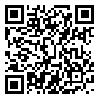BibTeX | RIS | EndNote | Medlars | ProCite | Reference Manager | RefWorks
Send citation to:
URL: http://ppj.phypha.ir/article-1-340-en.html
It has been revealed that dopamine (DA) modulates gastro-duodenal responses to stress. Several investigations have been made to identify the mechanisms and/or receptors by which DA or its promoters exert their gastroprotective function against stress, however there are many discrepancies in this respect. In order to clarify the relative contribution and/or interaction of two DA receptor subtypes (Dl and D2) on stress-induced gastric ulcer (SIGU), their selective agonists including SKF-38393 (SKF) and quinpirole (QPL) were used. For this purpose the agonists were injected (i.p. alone and/or in combination) to individual groups of rats. Some doses of SKF and QPL were injected i.p. (5 mg/kg) and i.c.v. (1 µg/rat), 60 and 30 min before stress induction respectively. Gastric ulcer was developed invariably by using a model of restraint and cold immersion stress. Both SKF and QPL reduced significantly the index and severity of SIGU. SKF was more effective after i.p. administration, however the effect of QPL was greater when it was injected i.c.v. When both SKF and QPL were injected i.c.v., their protective effects on SIGU were enhanced significantly. When SKF was injected i.p. and QPL injected i.c.v., the ulcer index and severity diminished more significantly, indicating a potentiation of their effects on SIGU. It is concluded that both central and peripheral DA receptors (Dl and D2) modulate gastric function and protective response to stress, however peripheral Dl and central D2 receptors are more involved in gastroprotective effects of DA-agonists and the protection is maximal when these two receptors are stimulated concurrently.
| Rights and permissions | |
 |
This work is licensed under a Creative Commons Attribution-NonCommercial 4.0 International License. |



